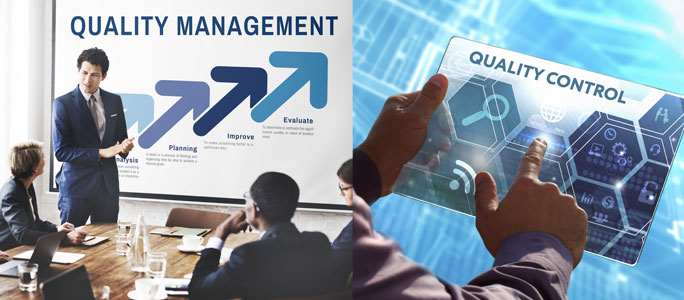What is CAPA in Quality Management?

We invariably go for quality products and services. When it comes to dining out, we choose to eat at a restaurant that offers the best quality food. When it is about selecting the personal care & cosmetics products, we pick the brand that’s renowned for its top-quality products. And when we fall ill and require medical attention, we opt for the hospital known for its quality healthcare services.
Why? Because quality inspires trust.
When we eat out, when we apply beauty products, and when we opt for healthcare services, we place our trust in the brands that we expect will offer us products/services of highest quality, without any fault. And while all brands are fallible, the best ones ensure they conduct a rigorous investigation to identify the cause of the failure and fix it with a corrective action that prevents its recurrence.
What is Corrective Action Preventive Action (CAPA)?
Well, we just defined CAPA above for you. Corrective Action Preventive Action (CAPA) is a process which identifies a problem, investigates its root cause, and resolves it by taking corrective action as well as preventing its recurrence in future through preventive action, which is also the ultimate objective of the CAPA process.
The CAPA process consists of set of actions for improvements to an organization’s processes to eliminate the causes of non-conformities, which could range from a customer complaint, equipment failure, deviations, defects, to misinterpretation of written instructions to carry out work. It can be applied in disciplines such as manufacturing, product designing, distribution, shipping, and packaging, etc.
The two pillars of CAPA process, which are distinct yet related, involve corrective action, i.e., the action taken to eliminate the causes of non-conformities, and preventive action i.e., the action taken to avoid the occurrence of such non-conformities. In order to ensure these two actions are effective, it becomes important to conduct systematic investigation of the root causes of failure.
CAPA in Quality Management
CAPA process is an inherent part of the overall quality management system (QMS). In fact, CAPA in quality management is a required part of ISO compliance and is an essential part of Total Quality Management (TQM) practices for any organization which wishes to achieve its objective of zero defects.
Both corrective action and preventive action should be part of a seven-step process, which begins with capturing, recording and identifying the actual or potential non-conformity, and further involves its evaluation, analysis of the root cause, and proactive measures such as risk assessments, audits, and inspections, etc.
Take a look at those seven steps below:
1. Identification
The QMS system comes with the capability to identify the problem in this first step of the CAPA process, facilitating appropriate documentation of the issue at hand. This includes an accurate and complete description of the problem i.e., what the problem is, when, where, why and how did it occur, and what the extent of the problem is.
2. Evaluation
This step involves performing risk analysis of the problem described and identified above, based on compliance risk, and any potential risk to the organization or customers. This is done to determine the need for action, its urgency, and the level of action needed in order to solve the issue. This step is the point where the CAPA request gets actioned or denied.
3. Investigation
The next step is about investigating any confirmed problem that has been identified and determining its root cause. Most significant part of CAPA in quality management, this process begins with documenting the actions that will be taken, their objective, the procedure to be followed, people who’ll be involved in the investigation, any other resources that will be required during the process, and its outcome.
4. Root cause analysis
Once the root cause has been identified, the next step is to analyze the root cause along with its contributing factors and perform the risk assessment accordingly. A QMS system allows listing down multiple root causes for an issue in addition to the resolution required and the result and allows recording the complete investigation and analysis report for future reference.
5. Planning the resolution
Once the root cause analysis has been performed, proposed corrections should be worked upon, and an action plan to correct/contain/ the problem and prevent it from happening in future, should be developed. This step also enables organizations to take a broader look at the issues by allowing proactive review of the processes and procedures.
6. Implementation
This phase involves the implementation of the action plan – right from initiation of the tasks listed and described in the action plan, their completion, to their documentation. This step confirms that the CAPA process is now fully at work to resolve the cause of nonconformity, and also to eliminate the cause of potential nonconformity in the future.
7. Follow-up
This step brings a closure to the CAPA process. It is basically a properly documented follow-up procedure, which intends to validate or verify the effectiveness of the entire process, which includes determining if all the tasks have been completed, nonconformities have been resolved, and verifying whether the actions taken have been effective, and they haven’t created new areas of inconsistencies.
Why is CAPA management important?
CAPA management holds special significance in the manufacturing industry, where quality management issues can have an immediate and significant impact. If the organizations fail to follow the CAPA procedures and determine the root cause of compliance issues, it can result in repeatable problems at unavoidable costs. So, it becomes extremely important to diagnose the problem, fix it at the earliest, and prevent its recurrence in the future.
By implementing CAPA management software, enterprises can have a structured and measurable improvement process that can identify the root cause of the problems, product, or workflow, to make informed decisions regarding action plans to be implemented for their effective resolution.
In doing so, the organizations can successfully mitigate adverse effects which could range from worker hazard, costly downtime, faulty products, and failure to comply with regulations, etc.
How QualityPro’s CAPA Management Software help businesses?
Failures are inevitable. However, addressing the non-conformances, customer complaints, and deviations in the most efficient manner is the key to correcting those failures, as ineffective complaint handling can hurt brand reputation and customer relationships.
Therefore, a corrective and preventive action system is a necessity for businesses. The right QMS CAPA software can help businesses build a strong basis for effective CAPA, as well as complaint handling. One QMS CAPA software that stands out among the crowded corrective action software space is QualityPro.
A quality management software that acts as a corrective and preventive action software, it is designed for growing manufacturing organizations. Schedule a demo today to learn more about how QualityPro can help your organization implement a CAPA process, by writing to us.







